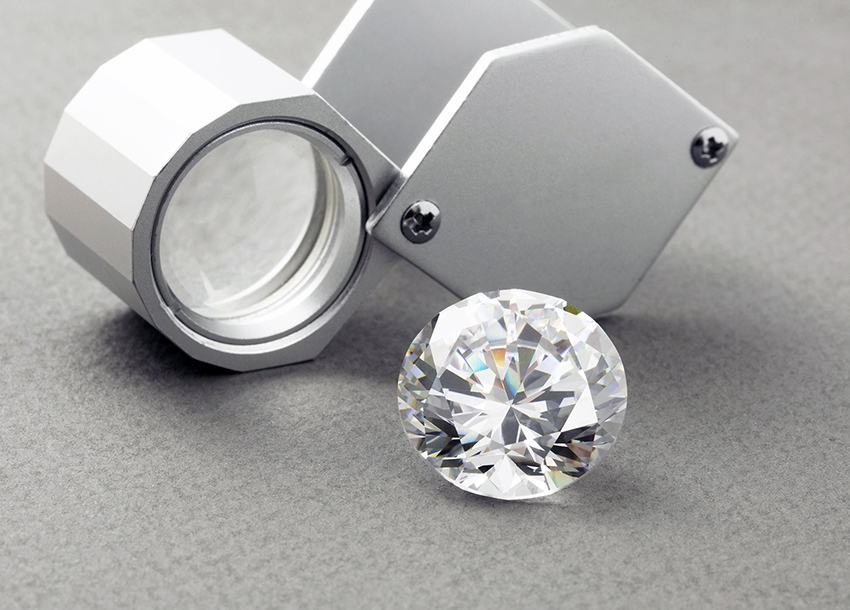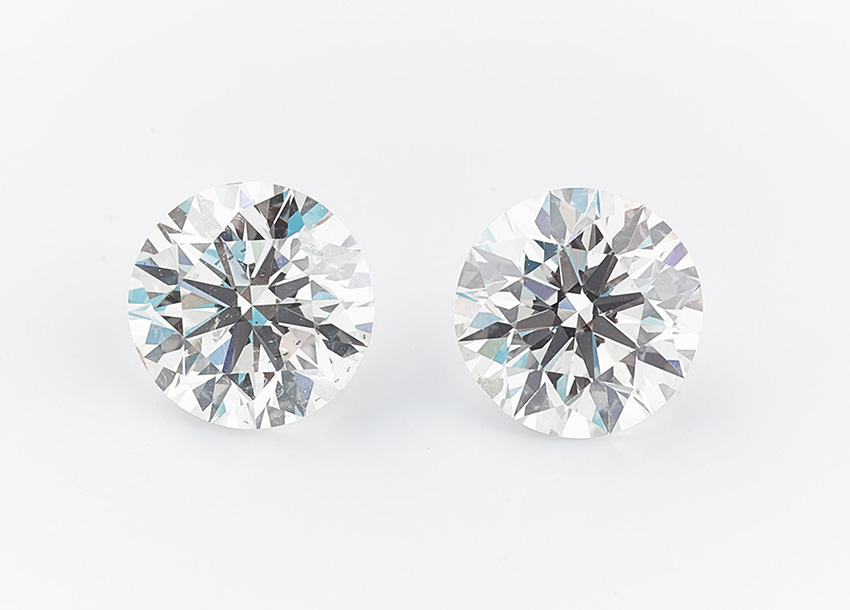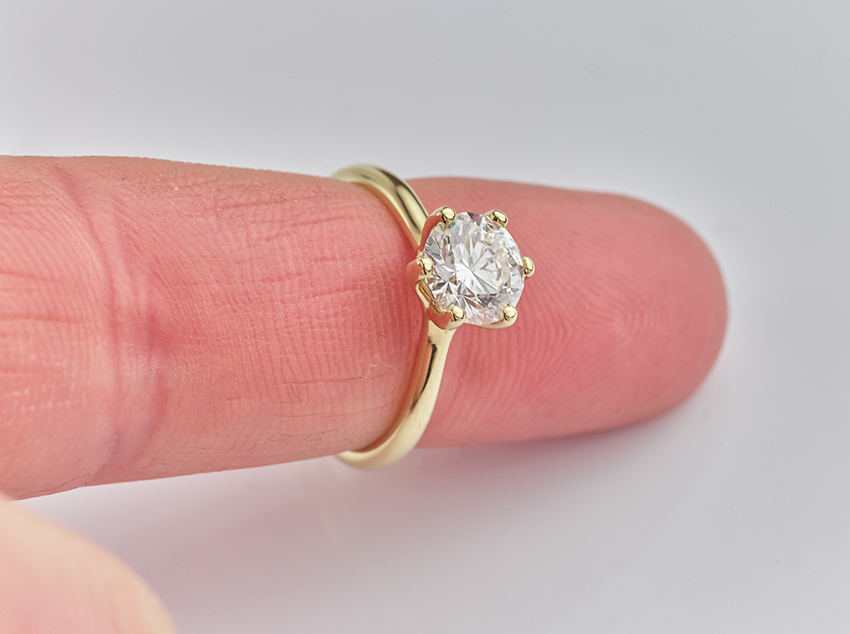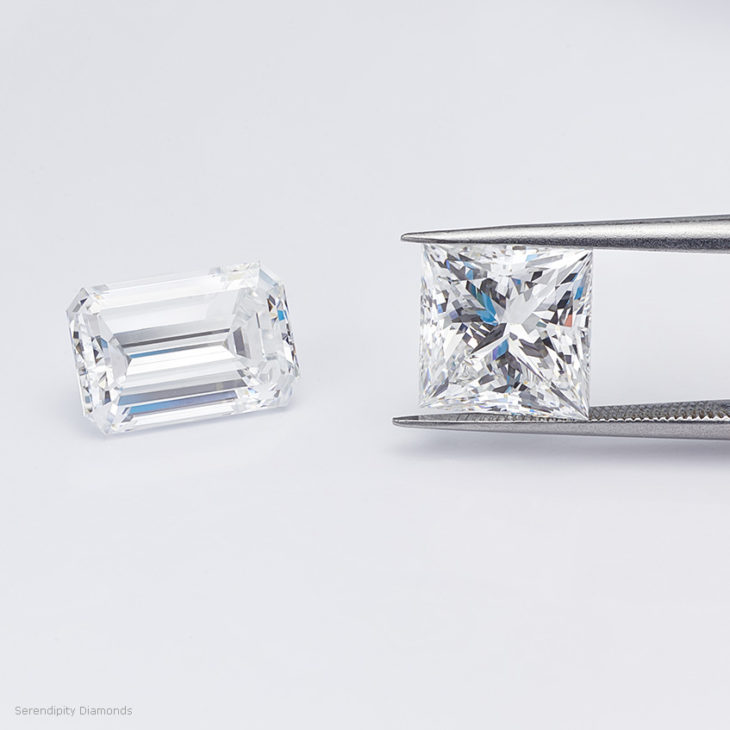What are Eye-clean diamonds?
An “eye-clean” diamond lacks imperfections visible to the naked eye and provides excellent value being more affordable than flawless (FL) internally flawless (IF) diamonds, which, due to their extreme rarity, come with a higher price tag.
The expression, “eye-clean” is used to describe the clarity of a diamond. visibly clear to the naked eye. This is an important consideration when it comes to purchasing a diamond.
Few buyers appreciate visible inclusions within their diamonds. For this reason, eye-clean sets a benchmark for acceptable clarity—especially for those lacking specific diamond knowledge.
Most diamonds are graded for clarity using a 10x magnification loupe. Natural clarity characteristics or inclusions are easier to view with the lens.
Some buyers feel the necessity to choose very high clarity grades such as VVS clarity diamonds. But, unknown to many buyers, a lower clarity diamond will provide a clear diamond free of marks visible to the naked eye.

What is the best clarity grade for an eye-clean diamond?
Strictly speaking, an eye-clean diamond lacks visible marks to the naked eye. With this in mind, we must take into consideration the size and shape of the diamond.
To explain, a large Emerald-cut diamond over 2-carats shows inclusions at SI clarity grades. By comparison, smaller round brilliant-cut diamonds below 1-carat suffice at SI clarity grades as eye-clean.
The reason for this difference lies in the step-cut of the Emerald cut—with a larger table unable to hide small inclusions. The larger size also increases the visibility of inclusions.
Step cut diamonds include the Asscher Cut, Baguette-cut Emerald cut and Carré cut diamond shapes. As a result, we recommend VS1 clarity to ensure the diamond is visibly clear to the naked eye.
Are SI1 and SI2 clarity diamonds eye-clean?
Most smaller slightly included SI1 clarity diamonds achieve an eye-clean standard, especially when assessed by GIA certification. Depending on your level of certification, SI2 clarity diamonds might or might not appear clear of marks to the naked eye.
Both of the diamonds below are SI2 clarity but the image (right) is GIA certified and appears far clearer owing to stringent and consistent diamond grading.

Does clean-to-the-eye vary by diamond size?
As mentioned above eye-clean often depends on diamond size. A small 2mm diamond will appear eye-clean at SI2 clarity, sometimes lower. Clarity characteristics are harder to detect within tiny diamonds. In contrast, a large diamond weighing 2 carats, 3 carats, or 4 carats with SI1 clarity characteristics will naturally show inclusions more easily owing to the large table size. This is especially true of small inclusions directly below the table facet.
How to ensure eye-clear really is eye-clean – the importance of GIA certification
This really is an important detail. Many diamond laboratories grade more leniently than the Gemological Institute of America. Buyers can often expect to pay a premium for GIA-certified diamonds, but the resulting clarity grade will be strict. Look at the above images, both certified SI2 clarity. The diamond clarity photograph on the right really is eye-clean compared to the IGI-certified diamond on the left. For this reason, we choose GIA-certified diamonds for clients over any other diamond grading laboratory reports.
Common diamond inclusions
Diamonds exhibit a variety of different types of inclusions. Characteristics vary from clouds to pinpoints, feathers, twinning wisps, needles and cavities to name just a few. Some types of inclusion reduce the likelihood of a diamond achieving an eye-clean description.
For example, a cavity breaking the surface of a diamond appears visibly to the naked eye—especially when light catches the surface of the stone.
At the same time, mineral crystals, darker in colour compared to transparent inclusions often appear with greater visibility.
Practical tips for assessment of clarity
A great tip for the assessment of eye-clean clarity involves the initial use of a 10x jeweller’s loupe to look for any inclusions. Once located, try to see the inclusion without the lens.
Jewellery settings on the impact of diamond clarity
The choice of diamond setting can impact the visibility of inclusions within a diamond. For example, sometimes, an inclusion visible on the edge of a diamond can be covered by a claw or prong. As a result, the set and finished diamond appears eye-clean.

By comparison, the same loose unset diamond would appear visibly included. For this reason, diamond certification provides assurance of a diamond’s quality before being set into a piece of jewellery.
About Mark Johnson
My name is Mark and I'm founder at Serendipity Diamonds. I have 30 years or experience in polished diamonds and jewellery. Today, I work with an expert team in our Isle of Wight jewellery showroom located in Ryde. Most of my work involves helping clients in our showroom, working on our two websites and photographing jewellery commissions.



